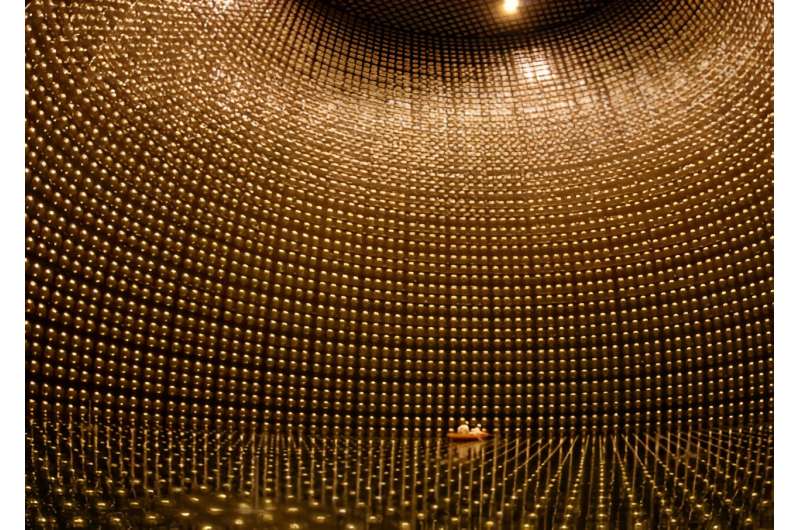This article has been reviewed according to Science X's editorial process and policies. Editors have highlighted the following attributes while ensuring the content's credibility:
fact-checked
preprint
trusted source
proofread
The cosmic neutrino background would tell us plenty about the universe, says researcher

Readers of Universe Today are probably already familiar with the concept of the cosmic microwave background (CMB). Its serendipitous discovery by a pair of radio astronomers at Bell Labs is the stuff of astronomical legend. Over the past decades, it has offered plenty of insights into the Big Bang and the origins of our universe. But there is another, less well-known background signal that could be just as revolutionary—or at least we think there is.
The cosmic neutrino background (CvB) has been posited for years but has yet to be found, primarily because neutrinos are notoriously difficult to detect. Now, a paper from Professor Douglas Scott of the University of British Columbia, developed as part of a summer school on neutrinos held by the International School of AstroParticle Physics in the Italian town of Varenna, discusses what we could potentially learn if we do manage to detect the CvB eventually.
The paper is written in a whimsical style and was released on arXiv, so it's unclear whether it will be formally peer-reviewed (or if the peer reviewers will remove the picture of the "elephant in the room"). However, while it touches on some advanced mathematics, it mainly focuses on potential things we can learn from analyzing the CvB.
Not surprisingly, many of those facts have much to do with neutrinos. We still don't know a lot about them, as Dr. Scott points out in his introduction. Why are there three types? How do they compare to one another? And one particularly painful thing for particle physicists is what exactly their masses are.
The CvB could provide insight into all three of those questions and even more about galaxy formation and the Big Bang itself. First, let's tackle the weight of neutrinos. One of the biggest questions regarding weight is whether the masses of the three types of neutrinos are of a "normal" or "inverted" hierarchy. Those two states change which of the three types is the "smallest." In the normal hierarchy, the mass of the third neutrino type is much more than the mass of the other two, which are almost equal. In the inverted hierarchy, the masses of the first two types are still equivalent but much more massive than that of the third type.
Once data is collected on the CvB, astronomers can analyze the expected shape of the waveforms based on the assumption of either hierarchy, but figure out which one better fits the observable data. It is simple enough in astronomical terms, but collecting that data is still the hard part. However, if we can narrow down the equivalent masses of neutrinos, we could potentially calculate another fundamental cosmological parameter—the sum of all their masses.
While that long-term goal is still a long way off, some larger-scale questions could be answered by simply understanding the CvB more generally. Measurements of the CvB can also be complicated by neutrinos from other sources, such as from other galaxies. If we understood the parameters of the CvB itself, we could eliminate that part of the signal, allowing us to more closely analyze neutrinos that were originally emitted from galaxies outside our own. With that insight, we could prove or disprove some assumptions about the early stages of galaxy formation, especially regarding the amount of energy they emit.
Given that neutrinos play a role in everything from our understanding of dark matter to fundamental questions about particle physics, it's natural that more than one discipline is trying to determine these factors for themselves. Particle physicists, who rely on high-energy collisions in particle accelerators rather than fortuitous collisions from neutrinos created alongside the universe, also seek to understand their mass. Dr. Scott thinks that a collaboration between astronomers seeking to tease out the secrets of the CvB and particle physicists hoping to build enough of a case for the characteristics of these elusive particles from the ground up could be beneficial. Spending a few weeks in an Italian villa discussing the nuances of their fields certainly sounds like an excellent way to kick off that collaboration.
More information: Douglas Scott, The Cosmic Neutrino Background, arXiv (2024). DOI: 10.48550/arxiv.2402.16243
Journal information: arXiv
Provided by Universe Today



















